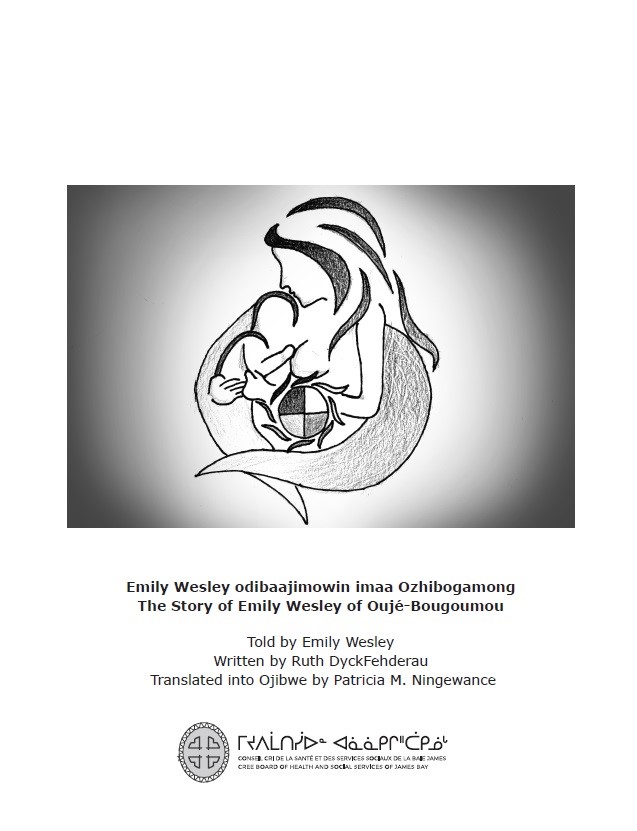Update: Writing Stories With the James Bay Cree: Ruth DyckFehderau
Ruth DyckFehderau - 15 April 2021
Since 2013 or so, I’ve been writing nonfiction stories on commission for the James Bay Cree of Northern Québec (and teaching in EFS part time). Geoff McMaster wrote here about the first book project I did with James Bay Cree storytellers, The Sweet Bloods of Eeyou Istchee: Stories of Diabetes and the James Bay Cree (2017).
I am commissioned by the public health sector of the James Bay Cree (art/story is important to healing), Cree Board of Health and Social Services (CBHSSJB). They hold copyright, and I post here with their permission. Our distributor is Wilfrid Laurier University Press.
The James Bay Cree publish a great deal of material – for instance, this hunting magazine and this news biweekly – but, to the best of my knowledge, Sweet Bloods was the first CBHSSJB publication intentionally marketed to non-Indigenous Canada. The second edition is currently in press.
I’m the writer, but the project itself was a team effort with many people facilitating everything from translation to my travels in remote areas to locating storytellers on the vast Eeyou Istchee territory (over 400,000 km2) and locating them again to correct/approve drafts and more. There’s a sample story here and alternate link here. All proceeds go to long-term health care in Eeyou Istchee.
Since the original publication of Sweet Bloods, we’ve embarked on a number of related projects. For instance, we recorded the book into audio format. The reader is Cree artist/musician Matthew Iserhoff of Juno-winning group CerAmony. Iserhoff lives in a Cree and Inuit community on Hudson Bay called Whapmagoostui or Kuujjuarapik, depending on whether you’re on the Cree or Inuit side of town. The community has no connecting roads, no cell reception, and limited bandwidth, so we couldn’t use the usual file-sharing technologies. Pilfering quiet times between construction noises, weather-off-the-Bay noises, and kids-at-home-for-lockdown noises, Matthew recorded the entire 280-page book onto a portable hard-drive which he then snail-mailed south to WLUP who looked after getting it onto audiobook platforms like Hoopla, Kobo, and audiobooks, with Apple and Audible forthcoming.
We are also gradually translating Sweet Bloods into several languages. The translations are intended for language-learning and -retention and, consequently, appear in two series of 27 single-story books: One in Ojibwe (transl. Pat Ningewance) and English side-by-side, and one in Northern East Cree (transl. Luci Bobbish-Salt), Southern East Cree (transl. Louise Blacksmith), French (transl. Valérie Duro), and English in four side-by-side columns. We’re releasing five or six stories at a time and we expect this project to take several years to complete. Below, see one cover from each series.


The stories are being illustrated by Cree youth artists. The illustration below, on the inner title page of one of the books, for instance, was done by Darius Trapper Mianscum of the Mikw Chiyâm Arts Concentration program in the Cree Nation of Mistissini, QC.
One of the many challenges of this translation project has been that the electronic system used by Library and Archives Canada, from whom we get ISBNs and other bibliographic data, cannot yet read syllabics. They’re working on it, but the current system replaces each syllabic with a question mark.
Across the country, many Indigenous people live with diabetes – and diabetes often comes with vision impairment that makes reading a traditionally designed printed page very difficult. Serifs, kerning, glyph spacing, justification, and other aspects of traditional book design all contribute to visual exhaustion. Many of our readers, for instance, find large-print (16- or 18-pt) Times New Roman font considerably more difficult to read than 10-point Verdana. From the outset, then, we’ve been relying on the advice of visually impaired readers, accessible design consultants (like EFS alum Jocelyn Brown), and various clear-print guidelines to produce accessibly designed books. The undecorated look of the text might be off-putting for some or look amateurish to others, but readers with visual impairment comment gratefully on being able to read much further without tiring.
We also try to prevent any pages in the books from looking like government letters. Historically, government letters brought orders to send children to Indian Residential Schools or, worse, news of death or permanent injury in those schools. A page that looks like a government letter, then, can trigger intense emotions in Indigenous readers.
Look for more on accessible and Indigenous book design here soon. We’re building a webpage on the topic.
Currently, I’m working, again with Cree storytellers, to finish up the first in a series of books: Finding Our Way Home: Indian Residential School Recovery Stories of the James Bay Cree, Vol 1. We expect to go to print in 2022. More on that in my next update.
I’m grateful to be able to continue to work with storytellers, translators, and all the other people who are making these projects possible.
Questions? Email me at rdyckfeh@ualberta.ca.